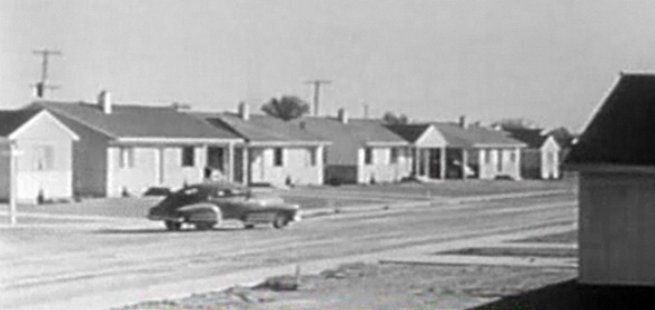
There's a long-standing myth that the 1950s were a sleepy time in America, both politically and culturally. We regard the decade as an intellectually nondescript and stultified time, an era enamored with the Hula-Hoop and I Love Lucy, ruled by a fuddy-duddy president ("I Like Ike") and terrorized by fluoridated water scares and hysterical Commie-hunters like Joe McCarthy.
But portraying the '50s as intellectually stunted not only misses the point, it wildly misrepresents what really happened. Not only was the decade not an era of mindless conformity, it was the diametric opposite. It was an intellectual cauldron. A closer examination of the decade reveals it to be not only one of the most stimulating periods in U.S. history but, irony of ironies, it was what the baby boomers, bless their hearts, thought the 1960s were (and I say this as a boomer myself).
Everything that the boomers believed happened for the first time during their coming-of-age years actually happened a decade earlier, and in a more disciplined, modest and elegant fashion -- the critical difference being that these remarkable phenomena didn't affect the masses or spill out dramatically into America's streets. That wouldn't happen until the turbulent 1960s.
The list of cultural and social movements that took shape in the 1950s is staggering: the drug scene, the free love scene, the music scene, the modern art scene, the civil rights movement (Brown vs. Board of Education, 1954), feminism, the peace movement, the anti-nuke movement (SANE was founded in 1957). Rachel Carson, the patron saint of American environmentalism, was cranking out material (The Sea Around Us was published in 1951) well before the national media got around to "discovering" her.
The tremendous artistic and intellectual surge of the 1950s was fueled partly by Europe: the existentialist philosophy of Sartre and Camus, the unconscious mind deconstructed by Freud and Jung, and the Theater of the Absurd as represented by Beckett, Ionesco, Pinter, and Genet. There was the poetry of T.S. Eliot and Dylan Thomas; the films of Bergman, Fellini and Luis Bunuel; the plays of John Osborne and Terence Rattigan.
Of course, America had its home-grown phenomena as well: Tennessee Williams, William Inge, Margaret Mead, Jackson Pollock, the Jazz Renaissance, the Beat Generation (Kerouac, Ginsberg, Burroughs), Lenny Bruce, Mort Sahl, Stan Freberg, Jules Feiffer, J.D. Salinger, Gore Vidal, Eudora Welty, and the Golden Age of television (Playhouse 90, "Paddy" Chayefsky, Mel Brooks, Neil Simon, Rod Serling, Sid Caesar, Ernie Kovacs, Edward R. Murrow, Dave Garroway, et al.).
And people dare call this decade -- this veritable hothouse of creative expression -- bland? Marlon Brando, Montgomery Clift, Billy Wilder, Stanley Kubrick, Stanley Kramer, Elia Kazan, Mary McCarthy, Budd Schulberg, Saul Bellow, Hannah Arendt, Sylvia Plath, John Updike, Nelson Algren, Bernard Malamud, Norman Mailer -- they all more or less came of age in the '50s.
Marijuana was being smoked by hipsters -- jazz musicians, beatniks, artists -- 15 years before it became the coolest thing on campus. Oh, yeah, something else was invented during the boring, cultural wasteland of the 1950s, something that's managed to stick around ever since. It was called rock 'n' roll. The '50s introduced the world to Elvis Presley, Chuck Berry, Little Richard, Fats Domino, Buddy Holly, etc., etc., etc.
The '50s marked the first sustained attacks, satirical and otherwise, on such cultural bugaboos as subliminal advertising, Madison Avenue (Vance Packard, David Riesman and Mad magazine), herd mentality, rampant consumerism, suburbs, the organization man, keeping up with the Joneses, split-level Hell, and the evils of plastic. Ralph Ellison's Invisible Man and James Baldwin's Notes of a Native Son were written in the '50s, and while Simone de Beauvoir wasn't embraced by American women until the 1960s, her classic treatise on feminism, The Second Sex, was published in the U.S. in 1953.
We could go on and on because the list is endless. I'm reminded of that quote from the movie Flashback, when the Dennis Hopper character says to the FBI agent, "When we get out of the '80s, the '90s are going to make the '60s look like the '50s." A clever, well-written line -- but inaccurate and misleading as hell.
David Macaray, a Los Angeles playwright and author ("It's Never Been Easy: Essays on Modern Labor"), was a former union rep. He can be reached at dmacaray@earthlink.net
